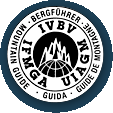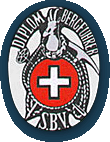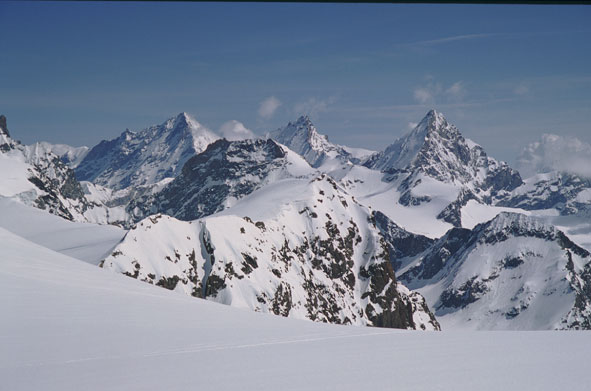|
|
Auf Deutsch |
|
Home |
or Guide Service Choosing a climb Info Contact Us


|
|
||||||||||||
|
|
The Tour de Ciel
April/May, On request I will work out your preferred
date of
the tour!
The Tour de Ciel Tour Itinerary Day 1 Day 2 Day 3 Day 4 Day 5 Day 6 April/May, On request I will work out your preferred date of the tour! Cost: CHF 3,529.00 (1 person) CHF 2,726.00 (per person with 2 person) Includes: hut fees, 5 breakfasts and 5 dinners, 1 liter of tea, 6 days guiding. Not included: Travel expenses to and from the meeting place, travel expenses like tram/train/taxi cost during the tour, lunches, drinks, dinners in towns, rental equipment and souvenirs.
Skills Required The tour de Ciel is in very demanding in high Alpine terrain and requires excellent experience in ski touring, Skiing technique and physical conditions. Carrying only the lightest pack, you cross massive glaciers surrounded by spectacular mountains, eat homemade food and sleep in a real bed in one of the many huts along the route. Maximum comfort in the huts, maximum safety, maximum view, minimum packs: the recipe for an unforgettable experience in the Swiss Alps. This is a strenuous tour and requires a high level of physical fitness. A normal day will be 8-10 hrs. of uphill and downhill skiing in high altitude with a light backpack. Participants must be strong skiers, PSIA level 9, able to perform strong dynamic parallel turns with ski randonne equipment while carrying a pack in all snow conditions: powder, hard packed and crud snow. I highly recommend doing a level I avalanche class with AIARE (American institute for Avalanche Research and Education) to have some basic Avalanche knowledge, transceiver skills as well as touring experiences. I strongly recommend alpine randonne equipment for a trip in Europe. My past experience tells me that even an expert telemark skier will struggle and have difficulty skiing with a backpack and dealing with the always-changing snow conditions. The telemark skier is usually slower in downhill skiing, takes more falls and therefore gets tired more quickly. Advanced steep uphill skiing techniques, experience with ski crampons as well as excellent Euro-uphill kick turns in all conditions are required. Basic mountaineering skills are helpful; we may use a rope, ice axe and crampons. Bring only gear you are used to (brand new, unknown gear not ideal), broken-in ski randonne boots, and the correct full skins. If you have any concerns about your level of skiing, mountaineering skills, please feel free to contact Swiss Guides. All of the above skills have to be solid and will be applied on the trip. Reading for route description and guide book: Alpine Ski Mountaineering: Volume 1 Western Alps by Cicerone Guide.
Photo Galleries in works
Click below for information on equipment and training plan for ski mountaineering in the Alps. |
|
||||||||||
|
|
||
|
|
Home
About
Ski
Mountaineering
Avalanche
Glacier
Rock
Prices
Choose
Registration
Contact
Hiking
Climb
©2021, Swiss Guides LLC info@swissrockguides.com |
|

